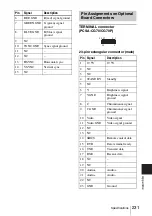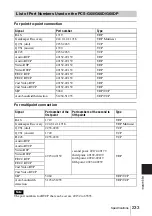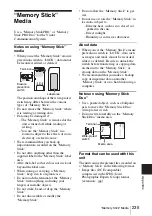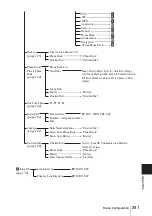
238
Glossary
Gatekeeper
Controls the access of H.323
communication devices on a network.
Administers the zone, access limitation,
audio/video bandwidth, and alias etc.
H.221
Frame structure for a digital channel in
audiovisual teleservices.
H.239
ITU-T standard for sharing data and
presentations with video. This supports the
dual video presentation mode, enabling
endpoints to receive and transmit video and
presentation data simultaneously.
H.261
Video codec for audio/visual services as p ×
64 Kbps. A standard that defines a video
coding algorithm, picture format and error
correcting technology for communication
between different manufacturers’ video
codecs.
H.263
A video coding algorithm based on the
H.261 standard. This format enables
communication via a lower bit rate.
H.263+
Video encoding/decoding format based on
the H.263 standard, added by the Annex I to
T (I, J, K …… T), that allows enhanced
picture quality and error resistance.
Normally, this format is a profile used with
a combination of some of the Annex for
H.263/H.263+.
H.264
A video coding algorithm standardized by
the ITU-T in May 2003. This format realizes
high-quality picture via a lower bit rate. It
provides an equal picture quality via half as
low bit rate as the H.263 format. The H.264
format is also called as MPEG4 Advanced
Video Coding (AVC).
H.320
A standard for communication between
different communication systems.
H.323
This enables communications on the
non-Qos (Quality of Service) LAN.
HD
An abbreviation for High Definition. High
Definition television provides a
high-resolution and high-quality picture.
There are 1080i, 1080p and 720P HD
formats.
HMLP
See “MLP”.
HOP
Number of routers that have passed through
to reach the remote party.
I-MUX
An abbreviation for Inverse Multiplexer.
This protocol allows you to transmit the data
at 384 Kbps via 6B-channel.
ISDN
An abbreviation for Integrated Services
Digital Network. This is a communication
protocol by CCITT on transmission of
integrated voice, video, and data.
Bandwidths include basic (64 Kbps) and
primary rate (1.544 and 2.048 Mbps).
ITU-T
An abbreviation for International
Telecommunication Union,
Telecommunications.
Lip synchronization
A function that synchronizes sound with
motion. Sound processing is much faster
than motion processing, thus sound and
motion sometimes get out of step with each
other.
MLP
Data communication is also available during
communication of video/audio signals
between the communication systems. The
MLP or HMLP is a protocol for data
communication such as NetMeeting. Using
the HMLP protocol allows faster data
transmission.
Summary of Contents for Ipela PCS-G60
Page 253: ...Sony Corporation ...
















































